On July 12, during the aerospace summit in Wuhan, Zhang Hailian, the deputy chief engineer of the China Manned Space Agency (CMSA), revealed new details about the country’s plans to send humans to the Moon.
The mission is expected to take place before the end of 2030 and is part of a larger project to establish a research station on the Moon. This mission aims to explore the best ways to build the station, conduct lunar exploration, and perform various experiments.
To achieve its goal of landing humans on the Moon, China needs to implement a series of improvements and upgrades to existing vehicles and develop new equipment.
Below are five devices and vehicles that China plans to improve and upgrade in the near future.
First, the Next-Generation Launch Vehicle
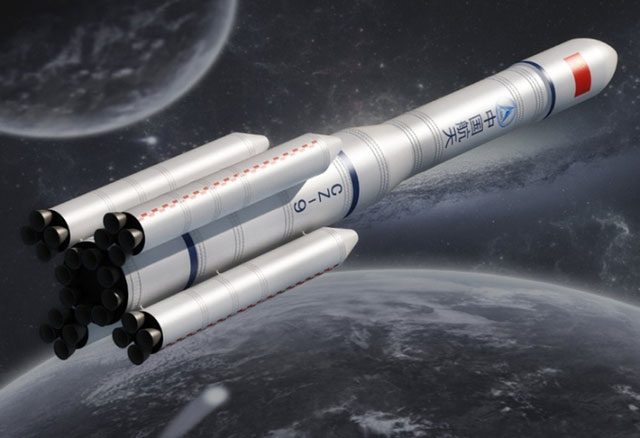
Simulation of China’s Long March 9 rocket. (Photo: Sina).
This launch vehicle is named Long March 10. It will have two versions: one with a booster engine and one without. Both versions will consist of a first stage, second stage, third stage, escape tower, and finally a protective shell.
Notably, the version with the booster engine will transport the lunar lander and spacecraft to a lunar transfer orbit. According to experts, this rocket version will stand 92 meters tall and have a launch weight of 2,678 tons, significantly stronger than China’s current most powerful launch vehicle, the Long March 5 (with a thrust of over 1,000 tons).
Rong Yi, the chief designer of the Long March 2F rocket, stated that the new rocket stage will have a diameter of 5 meters, and the booster engine will have the same diameter.
“The top priority of this rocket is its ability to carry heavy payloads. This is essential for crewed lunar missions. Therefore, we hope this rocket will be able to carry 27 tons to lunar transfer orbit or 70 tons to low Earth orbit (LEO), three times heavier than what the Long March 5 can carry,” said Rong Yi.
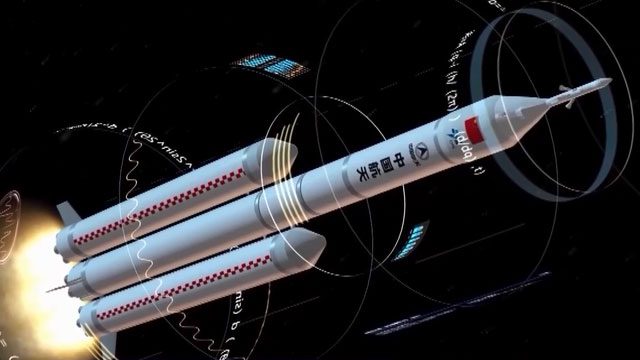
The Long March 10 rocket is expected to have several advantages over previous generations of Chinese rockets. (Photo: CGTN)
Additionally, the version without the booster engine will reduce operational costs and is designed for missions to the space station. The first stage of this rocket will be reusable.
China will also conduct several uncrewed tests before the Long March 10 rocket is put into service for its first crewed mission, expected to take place in 2027.
Second, New Crewed Spacecraft
In addition to the launch vehicle, the development of a new crewed spacecraft is also underway. This spacecraft will use a modular design, meaning it can be assembled with various components for different purposes, whether for missions in low Earth orbit or deep space. The new spacecraft will include an escape tower, re-entry capsule, and equipment compartment.
Astronauts will operate the spacecraft from the re-entry capsule, while the escape tower can detach the re-entry capsule from the rocket in case of an emergency during launch, ensuring crew safety. The equipment compartment will provide propulsion and power for the spacecraft.
Zhang Hailian stated that this spacecraft is expected to weigh 26 tons and accommodate three astronauts.
He also revealed that China is considering developing a spacecraft for low Earth orbit based on current research. “This spacecraft will carry 4 to 7 passengers, facilitating space tourism. The re-entry capsule, escape tower, and the spacecraft will remain virtually unchanged, except for the equipment compartment,” Zhang said.
Third, Lunar Lander
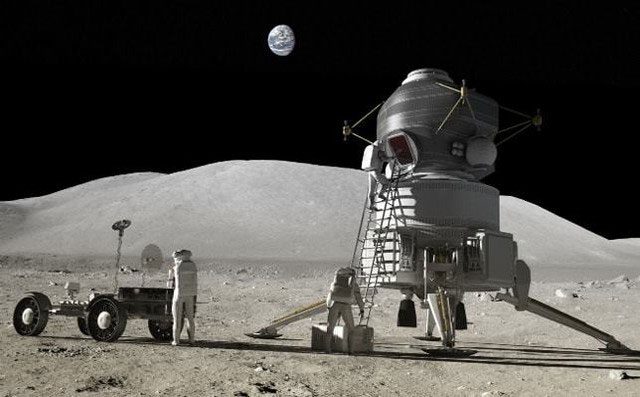
China plans to design a lunar lander to support its mission to send humans to the Moon by 2030. (Illustrative photo).
According to experts, China’s lunar lander will weigh approximately 26 tons, consisting of a lunar module and a propulsion module. This lander can deliver two astronauts to the Moon’s surface. Specifically, the lunar module serves as the crew compartment, while the propulsion module assists in braking close to the surface, allowing the lander to slow down for a gentle landing.
Zhang stated: “This vehicle is extremely sensitive to weight, so we need to maintain a lightweight design with integration.”
Moreover, the lunar lander will feature a lightweight design to improve structural efficiency and have backup energy functions. Notably, this lander will also have autonomous flying capabilities. Its primary job is to transport astronauts from lunar orbit to the surface and then back to orbit.
Fourth, Lunar Rover
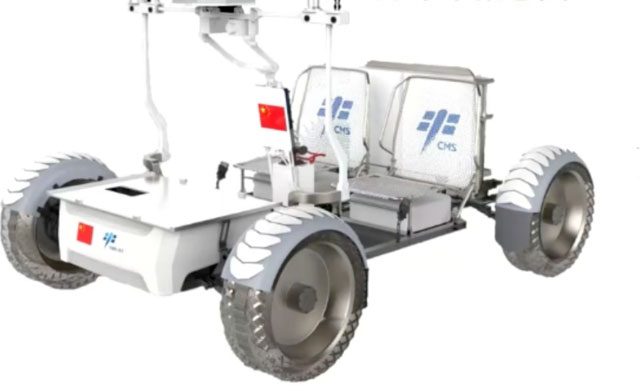
Simulation of China’s lunar rover. (Photo: CGTN).
The lunar rover, weighing 200 kg, will serve as a transportation vehicle for up to two astronauts, enabling them to conduct research missions on the Moon.
Zhang added: “Astronauts can collect soil samples and perform experiments on the Moon within a range of 10 km.”
Fifth, Mobile Laboratory
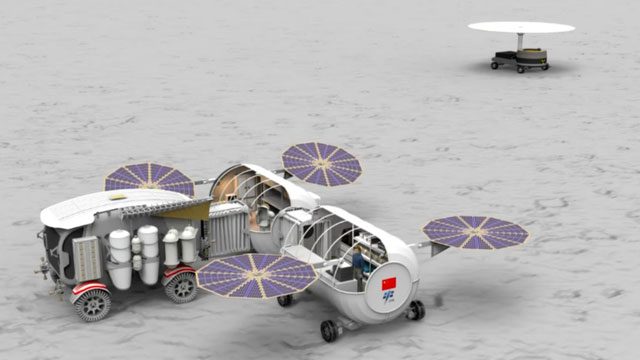
China plans to send a mobile laboratory to the Moon. (Photo: CGTN)
Alongside the lunar rover, China also plans to send a mobile laboratory to the Moon. This laboratory will be capable of moving autonomously over a wide range. Astronauts can stay inside it for short periods.
Zhang emphasized: “In the future, we may even consider building resource-based facilities on the Moon to expand the research station on this planet. This is a preliminary idea and requires further steps to verify its effectiveness.”


















































